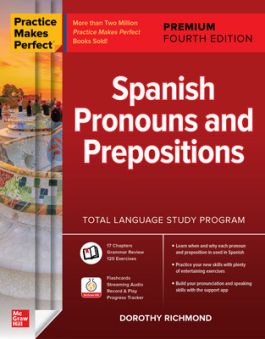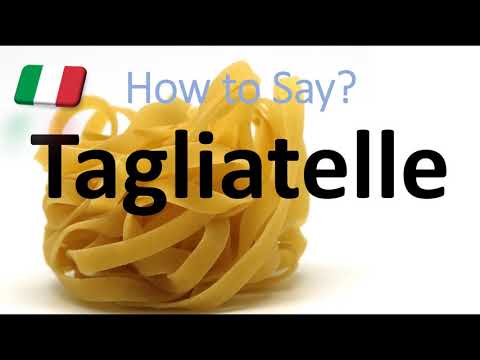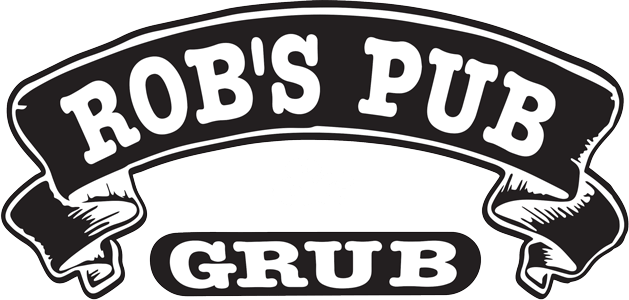Introduction

In the world of culinary delights, accuracy in pronunciation can add a new dimension to the experience. When it comes to pasta, correctly pronouncing the names of various types not only showcases your knowledge but also pays homage to the rich Italian heritage from which these dishes originate.
While many people enjoy indulging in a plate of Penne pasta, not everyone knows how to pronounce it correctly. This blog post aims to guide you through the intricacies of pasta pronunciation, with a specific focus on mastering the pronunciation of Penne. By understanding the correct sounds and learning common mispronunciations to avoid, you can confidently order this popular pasta dish without hesitation.
So, if you’ve ever found yourself uncertain about how to say “Penne” or any other pasta name, this guide will equip you with the tools and techniques to master pasta pronunciation, making your culinary experience even more authentic and enjoyable.
Understanding The Importance Of Correct Pasta Pronunciation
Accurate pasta pronunciation may seem like a trivial detail, but it holds significance in showcasing cultural appreciation and respect for Italian cuisine. Pronouncing pasta names correctly not only demonstrates your knowledge and understanding of the dish but also helps maintain the authenticity of the culinary experience.
Imagine ordering a plate of Penne pasta confidently, correctly pronouncing it as “pen-neh,” and receiving the dish as expected. It enhances the overall dining experience, allowing you to fully immerse yourself in the flavors and traditions of Italy. On the other hand, mispronouncing pasta names can lead to confusion, miscommunication, and even a misrepresentation of the dish itself.
By taking the time to learn and master the correct pronunciation of pasta names like Penne, you can enhance your culinary journey and show respect for the cultural heritage from which these dishes originate. So, embrace the importance of correct pasta pronunciation and elevate your dining experience to a new level of authenticity.
The Basics Of Pasta Pronunciation
To master pasta pronunciation, it is essential to understand the basics. Pronouncing pasta names correctly involves breaking down the words into distinct sounds and syllables. One such example is Penne pasta, which is pronounced as “pen-neh.” Here are some key points to remember when pronouncing pasta names:
- Stress on the correct syllable: Pay attention to where the stress falls in the word. In the case of Penne, the stress is on the second syllable.
- Vowels and consonants: Pronounce each vowel and consonant clearly. Avoid blending them together or skipping any sounds.
- Practice phonetics: Familiarize yourself with the International Phonetic Alphabet (IPA) and use it as a guide to accurately pronounce pasta names.
- Listen and imitate: Take advantage of online resources, audio clips, or videos that provide audio examples of correct pasta pronunciation. Listen carefully and imitate the sounds to enhance your pronunciation skills.
Remember, practicing regularly and seeking feedback will help you refine your pasta pronunciation skills over time.
Penne Pasta: Correct Pronunciation And Common Mispronunciations

When it comes to penne pasta, the correct pronunciation is “pen-neh.” However, many people often mispronounce it as “pen-ee” or “pee-nee.” The key to pronouncing penne pasta correctly is to break it down into two syllables: “pen” and “neh.”
The stress in the word falls on the second syllable, so make sure to emphasize the “neh” sound. It’s important to pronounce each vowel and consonant clearly, without blending them together.
Mispronunciations can lead to confusion and may not accurately convey your culinary knowledge and expertise. To ensure you are saying it correctly, it’s helpful to listen to audio examples or practice with a native speaker. Embracing accurate pasta pronunciation adds an extra layer of authenticity to your culinary experience.
Mastering Italian Pronunciation
To truly master Italian pronunciation, it is important to familiarize yourself with the specific sounds of the Italian language. While some sounds may be similar to those in English, others may be entirely new to you. Practice is key in order to develop a natural and accurate Italian accent.
Some key tips to help you improve your Italian pronunciation include:
- Pay attention to vowel sounds: Italian vowels are generally pure and short, so take care to pronounce each vowel clearly and distinctly. Avoid blending multiple vowels together.
- Master the double consonants: Italian has a number of double consonant sounds, such as “ss” in “pasta” or “tt” in “spaghetti.” Practice pronouncing these doubled consonants with a slight pause between each repeated sound.
- Focus on stress and intonation: Italian has a rhythmic stress pattern, with most words stressing the second-to-last syllable. Pay attention to the stress patterns of different words and try to replicate the natural intonation.
- Listen to native speakers: Immersion is a great way to improve your Italian pronunciation. Listen to Italian podcasts, watch movies or TV shows, or engage in conversations with native speakers to familiarize yourself with the natural flow and rhythm of the language.
Remember, mastering Italian pronunciation takes time and practice. Be patient with yourself and strive for progress, rather than perfection.
Key Tips For Mastering The Pronunciation Of Pasta Names
To master the pronunciation of pasta names, it is important to pay attention to certain key tips. First and foremost, familiarize yourself with the specific sounds of the Italian language. Practice saying each vowel and consonant clearly and distinctly.
Next, focus on the stress and intonation patterns of the pasta names. Italian has a rhythmic stress pattern, with most words stressing the second-to-last syllable. Pay attention to the stress patterns of different pasta names and mimic the natural intonation.
To improve your pronunciation, listen to native speakers. Immerse yourself in the language by listening to Italian podcasts, watching movies or TV shows, and engaging in conversations with native speakers. This will help you become more familiar with the natural flow and rhythm of the language.
Lastly, practice regularly and be patient with yourself. Pronunciation takes time to master, so strive for progress rather than perfection. By following these key tips, you will be on your way to pronouncing pasta names accurately and confidently.
Practice Makes Perfect

To truly master the pronunciation of pasta names, practice is essential. The more you practice, the more comfortable you will become with producing the correct sounds and intonation patterns. Here are some exercises and resources that can help improve your pasta pronunciation:
- Repeat after native speakers: Listen to recordings of native Italian speakers pronouncing different pasta names and practice repeating after them. This will help you mimic the natural flow and rhythm of the language.
- Use online pronunciation tools: There are several online resources and apps available that provide pronunciation exercises and feedback. Utilize these tools to practice and fine-tune your pronunciation skills.
- Engage in conversation: Find opportunities to have conversations with native Italian speakers. This will not only help you practice pronunciation but also improve your overall language skills.
- Join language exchange groups: Join online language exchange groups or find local meet-ups where you can practice speaking Italian with native speakers. This will give you a chance to receive feedback and guidance while improving your pronunciation.
Remember, consistency and patience are key. The more you practice, the more confident you will become in your pasta pronunciation skills.
Exercises And Resources To Improve Your Pasta Pronunciation
To truly master the pronunciation of pasta names, practice is essential. The more one practices, the more comfortable they will become with producing the correct sounds and intonation patterns. There are several exercises and resources available to help improve pasta pronunciation.
One effective method is to repeat after native speakers. Listening to recordings of native Italian speakers pronouncing different pasta names and practicing repeating after them will help mimic the natural flow and rhythm of the language.
Additionally, online pronunciation tools can be utilized. There are several resources and apps available that provide pronunciation exercises and feedback. These tools can help individuals practice and fine-tune their pronunciation skills.
Engaging in conversation with native Italian speakers is another helpful exercise. Finding opportunities to have conversations with natives will not only help practice pronunciation but also improve overall language skills. Furthermore, joining language exchange groups, either online or local meet-ups, can provide a chance to receive feedback and guidance while improving pronunciation.
Consistency and patience are key. The more one practices, the more confident they will become in their pasta pronunciation skills.
Beyond Penne: Pronouncing Other Pasta Names
When it comes to Italian cuisine, the variety of pasta options is endless. While penne may be a popular choice, there are numerous other pasta names to master. Pronunciation of pasta names can vary depending on the region in Italy and even among Italian speakers. Here are some commonly mispronounced pasta names and their correct pronunciations:
- Spaghetti: Pronounced “spa-get-tee,” this long, thin pasta is a staple in Italian cooking.
- Fettuccine: Pronounced “fet-too-chee-neh,” this flat, ribbon-like pasta is often paired with creamy sauces.
- Linguine: Pronounced “lin-gwee-neh,” this pasta is similar to spaghetti but has a flatter shape.
- Ravioli: Pronounced “rah-vee-oh-lee,” this stuffed pasta is usually filled with cheese or meat.
- Tortellini: Pronounced “tor-teh-lee-nee,” this ring-shaped pasta is typically filled with cheese, meat, or vegetables.
To truly immerse yourself in Italian cuisine, it’s important to pronounce these pasta names accurately. Practice these pronunciations to ensure you order your favorite pasta with confidence.
Exploring The Correct Pronunciation Of Different Pasta Varieties

Italian cuisine offers a vast array of pasta varieties, each with its unique name and pronunciation. When it comes to exploring the correct pronunciation of different pasta varieties, it’s essential to pay attention to the specific nuances of each name. Here are a few examples:
- Gnocchi: Pronounced “nyoh-kee,” this potato-based pasta is soft and pillowy in texture.
- Farfalle: Pronounced “far-fah-leh,” this pasta is also known as “bowtie pasta” due to its distinctive shape.
- Rigatoni: Pronounced “ree-gah-toh-nee,” this tube-shaped pasta is often used in baked dishes or with thick sauces.
- Fusilli: Pronounced “foo-zee-lee,” this spiral-shaped pasta is perfect for capturing sauces.
- Orecchiette: Pronounced “oh-rek-kee-eh-teh,” which means “little ears” in Italian, this pasta has a small, round shape.
Remember to pay attention to the specific sounds and emphasis on syllables when pronouncing these pasta names. By mastering the correct pronunciation, you can fully immerse yourself in the rich culinary heritage of Italian cuisine.
Source: www.inevitaly.com
Source: www.preply.com
Conclusion
In conclusion, mastering the pronunciation of pasta names is not just about getting the words right, but also about embracing the rich culinary heritage of Italian cuisine. By learning the correct pronunciation, you can enhance your understanding and appreciation of different pasta varieties and elevate your dining experience. Remember to pay attention to the specific sounds and emphasis on syllables, as this will help you accurately pronounce names like penne, gnocchi, farfalle, rigatoni, fusilli, and orecchiette. Practice is key, so make use of resources such as online pronunciation guides and audio recordings to refine your skills. With time and dedication, you can confidently order and discuss pasta dishes with the correct pronunciation, impressing both Italian food enthusiasts and native speakers alike. So, embrace the challenge and let your love for pasta be reflected in the way you say its names.
Embracing Accurate Pasta Pronunciation For A True Culinary Experience
Embracing accurate pasta pronunciation is essential for those seeking an authentic culinary experience. Pronouncing pasta names correctly not only shows respect for Italian culture but also enhances the enjoyment of the dish itself. By mastering the pronunciation, one can fully appreciate the nuances and flavors that each pasta shape brings to a meal.
When dining at Italian restaurants or cooking traditional Italian recipes, correctly pronouncing pasta names allows for better communication and understanding. It enables one to confidently order their favorite dish or discuss pasta varieties with chefs and fellow food enthusiasts.
Moreover, accurately pronouncing pasta names showcases a genuine interest and appreciation for Italian cuisine. It reflects a dedication to learning, exploring, and truly immersing oneself in the rich gastronomic heritage of Italy. So, embrace the challenge of mastering pasta pronunciation and let your love for pasta be reflected in the way you say its names. Buon appetito!
FAQ About How To Say Penne: Mastering Pasta Pronunciation
Q: What is the correct way to pronounce “penne”?
A: The correct pronunciation of “penne” is “pen-ay.”
Q: Is there a specific reason why it is pronounced that way?
A: “Penne” is an Italian word, and the pronunciation follows the Italian language phonetics.
Q: How is “penne” different from other types of pasta pronunciations?
A: Unlike some other pasta names, “penne” has a clear and distinct pronunciation that closely resembles its spelling.
Q: Are there any common mispronunciations of “penne” to avoid?
A: Yes, some common mispronunciations to avoid are “pen-nee” or “pen.”
Q: Can you provide a brief guide on pronouncing other pasta names correctly?
A: Pronouncing pasta names correctly can vary depending on the language of origin. It’s best to research and listen to native speakers to master the pronunciation of various pasta types.
Q: Are there any online resources or tools available to help with mastering pasta pronunciations?
A: Yes, there are websites, videos, and audio resources online that can assist in learning the correct pronunciations of various pasta names.
